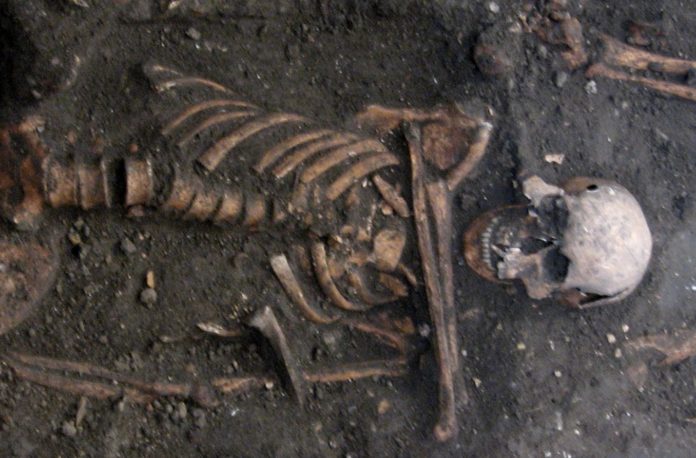An international team of researchers led by the University of Cambridge has discovered and sequenced ancient genomes from the herpes virus, which commonly causes lip sores and today infects about 3.7 billion people worldwide.
According to recent research, the HSV-1 viral strain that causes facial herpes as we know it today first appeared some 5,000 years ago, following massive Bronze Age migrations into Europe from the Steppe grasslands of Eurasia and the ensuing population booms that accelerated transmission rates.
Herpes has been around for millions of years and affects a variety of creatures, from coral to bats. Despite the fact that HSV-1 is so common in humans now, researchers have found that HSV-1 in the past has been unexpectedly difficult to identify.
According to the study’s authors, the emergence of a new cultural activity imported from the east—romantic and sexual kissing—may have corresponded with the Neolithic blossoming of facial herpes observed in the ancient DNA.
“The world has watched COVID-19 mutate at a rapid rate over weeks and months. A virus like herpes,” according to co-senior author Dr Charlotte Houldcroft, “evolves on a far grander timescale.”
“Facial herpes hides in its host for life and only transmits through oral contact,” adds the author, “so mutations occur slowly over centuries and millennia. We need to do deep time investigations to understand how DNA viruses like this evolve. Previously, genetic data for herpes only went back to 1925.”
The team was able to find herpes in the bodies of four people who had died more than a thousand years apart and get viral DNA from the roots of their teeth. Herpes often gets worse when there is an infection in the mouth. At least two of the ancient bodies had gum disease, and a third used to smoke.
The earliest sample, which dates to the late Iron Age and was discovered in the Ural Mountains of Russia, came from an adult male.
Two other samples came from Cambridge, UK. One was a female from a 6-7th century CE early Anglo-Saxon burial a few miles south of the city. The other was a young adult male from the late 14th century who had endured horrifying tooth abscesses and was buried on the grounds of medieval Cambridge’s benevolent hospital (later to become St. John’s College).
The third sample was from a young adult male discovered in Holland; he was an avid smoker of clay pipes who was likely killed in 1672 by a French raid on his village on the Rhine’s banks.
Only four herpes positives were found when ancient DNA samples from about 3,000 archaeological findings were tested, according to co-author Dr. Meriam Guellil of Tartu University’s Institute of Genomics.
According to co-lead author Dr. Lucy van Dorp of the UCL Genetics Institute, “by comparing ancient DNA with herpes samples from the 20th century, we were able to analyse the differences and estimate a mutation rate, and consequently a timeline for virus evolution.”
“Every primate species has a form of herpes,” says Dr. Christiana Scheib, a co-senior author, “so we assume it has been with us ever since our own species left Africa.”
But something happened roughly 5,000 years ago that made it possible for one herpes strain to surpass all others, presumably an increase in transmissions that may have been brought on by kissing, according to the co author.
A Bronze Age document from South Asia is the first known evidence of kissing, according to academics, who believe the practice may have spread westward with the migrations of people from Eurasia into Europe.
In fact, hundreds of years later, the Roman Emperor Tiberius tried to stop people from kissing at official events so they wouldn’t get sick, which may have been because of herpes. HSV-1 transmission, however, would have been “vertical” over the most of human prehistory, spreading from an infected mother to a newborn child.
According to the WHO, two-thirds of the world’s population under 50 is currently infected with HSV-1. Most of the time, the occasional lip sores that come from the virus are embarrassing and painful. However, when the virus is combined with other illnesses, like sepsis or COVID-19, it can be fatal. Following Caesarean deliveries, HSV-1 infection claimed the lives of two women in the UK in 2018.
In order to comprehend how DNA viruses like herpes and monkeypox and our own immune systems are adapting in response to one another, we need genetic samples that are hundreds or even thousands of years old, according to Houldcroft.
The research team wants to go even further back in time to explore how this resistant primordial sickness infected early hominins. My next mountain to conquer is neanderthal herpes, ends Scheib.
Image Credit: Getty
You were reading: A New Study Just Changed What We Know About The Ancestor of “Cold Sore” Virus
